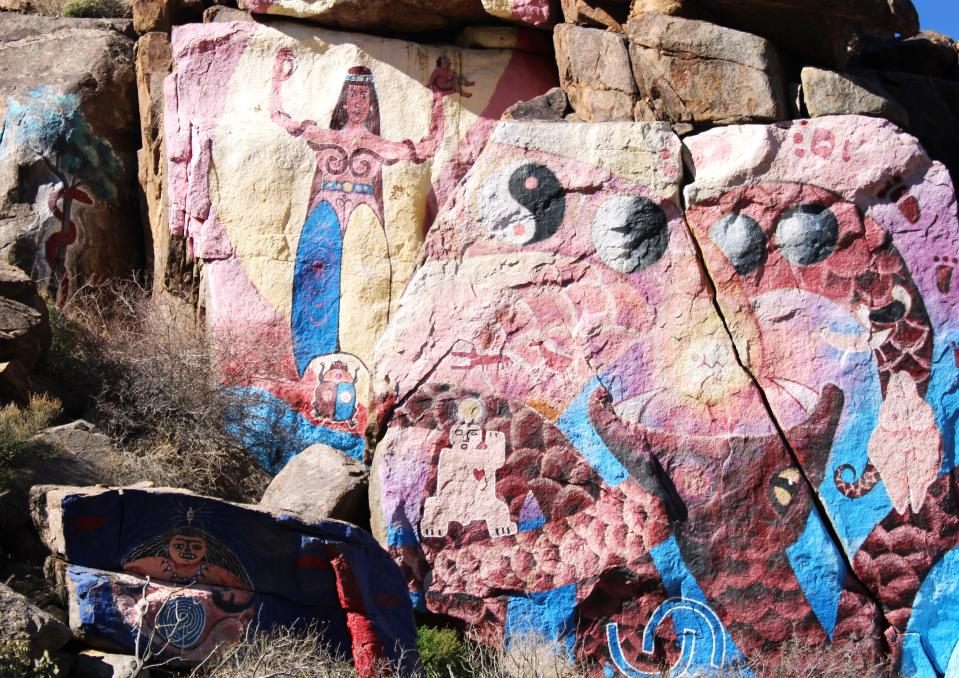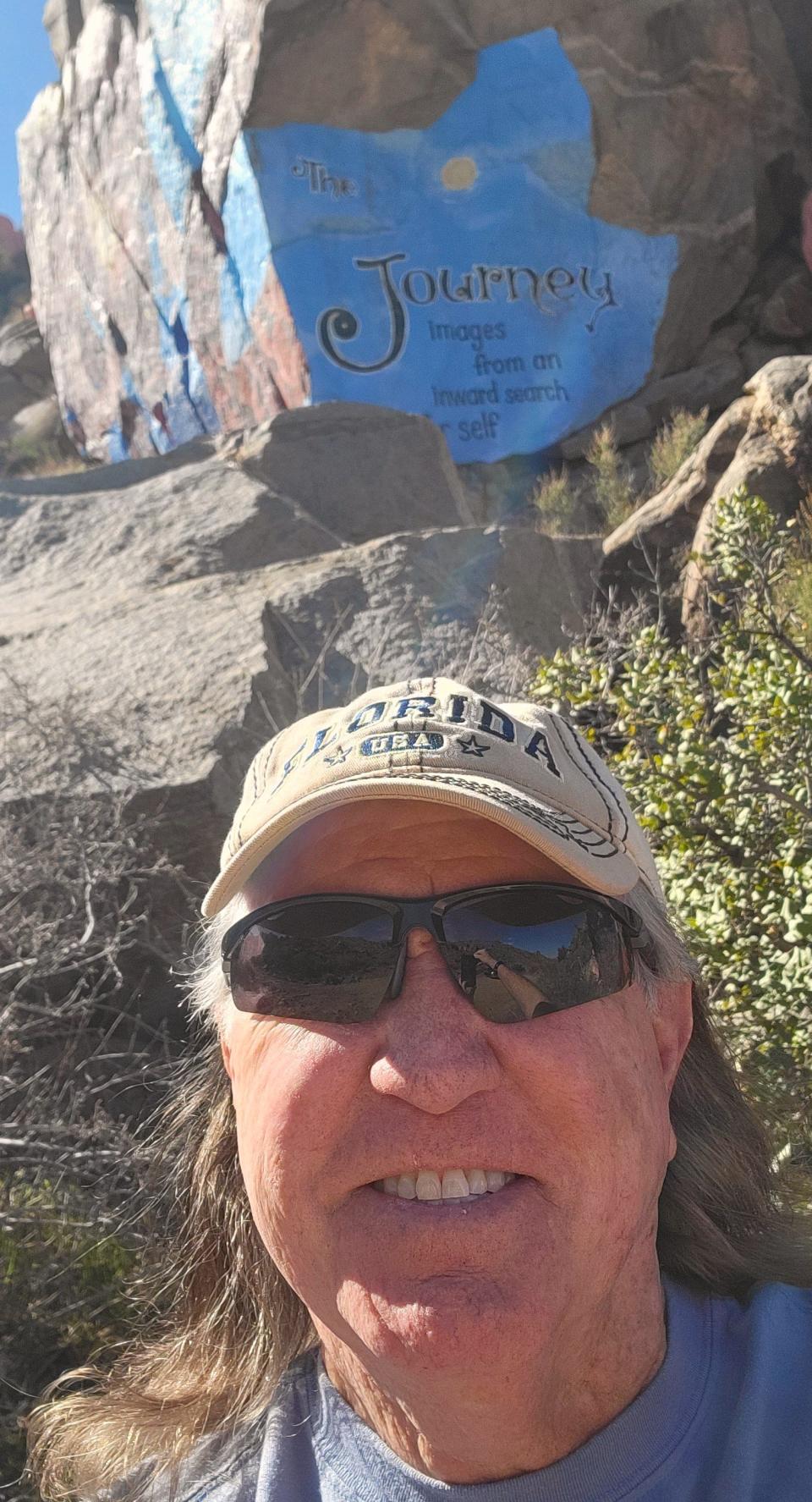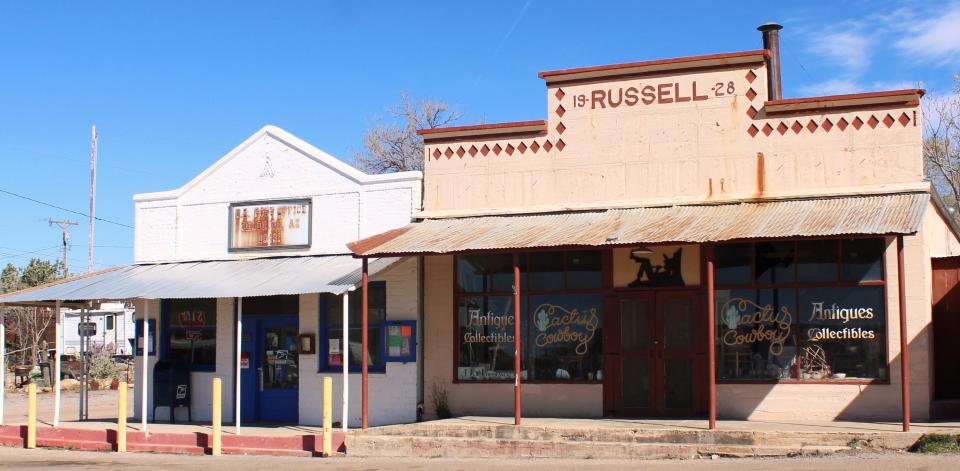A trip to Chloride, Arizona, reveals some interesting history. Here's what to expect
Chloride, Arizona, is known as the "Gem of the Cerbats." I had no idea what that even meant - the gem of anything to do with bats did not seem like a place anyone would want to visit.
I looked up the potential dangers of hanging around with bats, especially upside down. Salmonellosis disease is one of the diseases that I think will make humans allergic to eating salmon. There is the Yersiniosis disease which will make humans say "Yer sister is a sissy" too many times, and finally, the Batasuarus disease, which can make humans rather large and extinct.
Of course, I may have embellished those results, but it should not be taken lightly if you are bitten by an unwanted Chiroptera.

According to Deserae, the local fount of historical knowledge about the small town of Chloride who seemingly runs both the Mineshaft Market and the Arizona Visitors’ Center, the name comes from the minerals found in the nearby Cerbat Mountains.
This range runs for approximately 23 miles and is home to many of Arizona’s top producing silver mines from days in the past.
“Millions of dollars were pulled out of the mines located here in and around Chloride,” Deserae said. “We’re the only true living ghost town with over three hundred permanent residents and some of those mines are still producing ore today.”
I have learned in my travels, and some readers will tell me I’m wrong, that a ghost town generally has no one around, except ghosts, and no federal post office. Chloride actually has one of the longest running post offices in the state of Arizona. It opened in 1873, closed for a bit, and then reopened in 1893. It is still in operation today, and yes, I checked.
Sure enough, there is a poster with a handsome guy who looks a lot like me hanging on the left wall. ‘Wanted, for impersonating a travel writer. Reward $0, he ain’t worth it.’ Now, that’s a Post Office.
Silver Chloride, which the town is named after, has a long and confusing history. Long because it dates back to the ancient Egyptians and confusing because I have no idea what the brainiac chemical scientists are writing about. Let’s just say that so much silver was found in the nearby hills that a whole lot of people became rich and a town where nothing existed before.
History, like where I left my car keys, can be mystifying, so the story of when silver was found in present day Chloride plays in the same realm.
In 1860, six miners found silver in the Cerbat Mountains and began digging. That is what miners do, but the local natives did not take kindly to it. So much so that four of the miners were killed and two escaped west to seek help from the United States military.
Deserare pointed out on the map where two of the miners who were killed by the local Native Americans are buried just southeast of the Chloride cemetery.
I paid a visit to the fenced off area of repose for the miners and said a prayer.

After the killings, the Cavalry arrived and peace was restored. Nope, not in the natives mind, but big mining diggings began anyway.
By 1863, the town of Chloride was founded with over 70 mines in operation.
Chloride grew to be the largest town in Mohave County (that’s how it is spelled in Arizona) and was actually the county seat.
At its height, Chloride boasted over 2,000 residents, and where people reside they need the necessities of life. Soon there were five hotels, a bank, a pool hall, eight saloons, five restaurants, and four brothels, as well as six churches for all those who spent naughty time at the saloons, brothels, and maybe even the pool hall.
Soon, a railroad spur was in place to transport the ore found in Chloride to Kingman and beyond. The train service also included passenger cars for locals, treasure-seekers, and the curious to visit this booming mining town nestled on the west side of the Cerbat Mountains.
Unlike many of these communities which dry up almost as quickly as they started, Chloride really only had a moment in its history of losing so many folks that it almost truly became a ghost town. During WWII many miners dropped their picks and shovels and picked up rifles and ammunition in the service of their country.
As the war ended, people started returning to Chloride but not just for mining, though there are still plenty of active mines in the area, but folks looked upon the small town as a haven from the ‘big city life’ and relished in the close knit community.
In fact, a lot of artists and musicians moved into the area to take advantage of the mild weather that Chloride had to offer and the beautiful landscape which can inspire such persons to wonderful creative moments.
I sat down for a moment on the exterior porch of The Thirsty Miner Soda Shop and Emporium located along North 2nd Street and started playing my harmonica. I felt inspired by the blue skies, wonderful vistas toward the mountains when suddenly the owner came out and smiled.
“Sorry,” she said. “I thought a cat got run over in the road.”

One true artist, not me, was Roy Purcell, a world renowned western painter who created marvelously brightly colored pieces of art depicting the beauty of the western scenery and way of life.
The late Senator Harry Reid once spoke of Purcell, saying ‘Purcell’s work reminds us of the mysticism of William Blake, the mastery of Michelangelo and the passion of Van Gogh - gifts he used with deep insight and compassion from the perspective of the ages yet with the poignancy of our own time and needs.’
And if proof of Purcell’s passion is needed, there is a section of rock murals laboriously crafted by the artist in the late 1960s on 2,000 feet of rock approximately one and a half miles east of Chloride along an easily maintained dirt road, appropriately named the Chloride Murals.
The images are those from Purcell’s vivid imagination and a great inscription painted along one of the murals is, “The Journey: Images From an Inward Search for Self.”
I sat upon a large boulder and did some searching of my inner self while viewing the murals. It did not last long, and I headed back to town - I was hungry and thirsty.
After quenching both at Yesterday’s Restaurant and Saloon, I wandered over to Cyanide Springs.
Being a western town from the 1860s, Chloride offers a lot for tourists to engage in from gift shops, food and drink, museums, a visitor’s center, campgrounds, hotel accommodations, and regularly scheduled good-old-fashioned shoot-outs at Cyanide Springs.
Dead in the center of Chloride is a reconstruction of a section of the original town made with the wood collected from the nearby Golconda Mine and utilized by the locals to build the town of Cyanide Springs.
Four actual miner’s cabins that were once used to house the families of some of the men working the mines are there in original shape, but now are occupied by gift shops and workshops for the maintenance needed on the structures.
An actual theater, the Silver Belle Playhouse, is still in use, mainly for the Historical Society’s meeting place but can be used for various venues for the public.

I stopped by the Jim Fritz Museum which contains artifacts from Chloride’s heyday all the way back to the 1880s. Very interesting for anyone who finds learning things fascinating - and who doesn’t?
According to Deserae, “Our peak season is just starting and soon there will be hundreds of people visiting here each week, for a couple of hours or for a couple of days.”
As I drove out, I noticed the Chloride Western RV Park was pretty crowded and with the amount of vehicles parked in front of the Sheps Miners Inn, it may be hard already to book a room.
The season is just starting?
Chloride has a long history and the folks I bumped into were gracious, ready to share a story or two about the town, and truly seemed to love living in this not ghost town next to the Cerbat Mountains.
John can be contacted at: beyersbyways@gmail.com
Information
This article originally appeared on Visalia Times-Delta: Chloride, Arizona is just more than a trip to a chemical town

